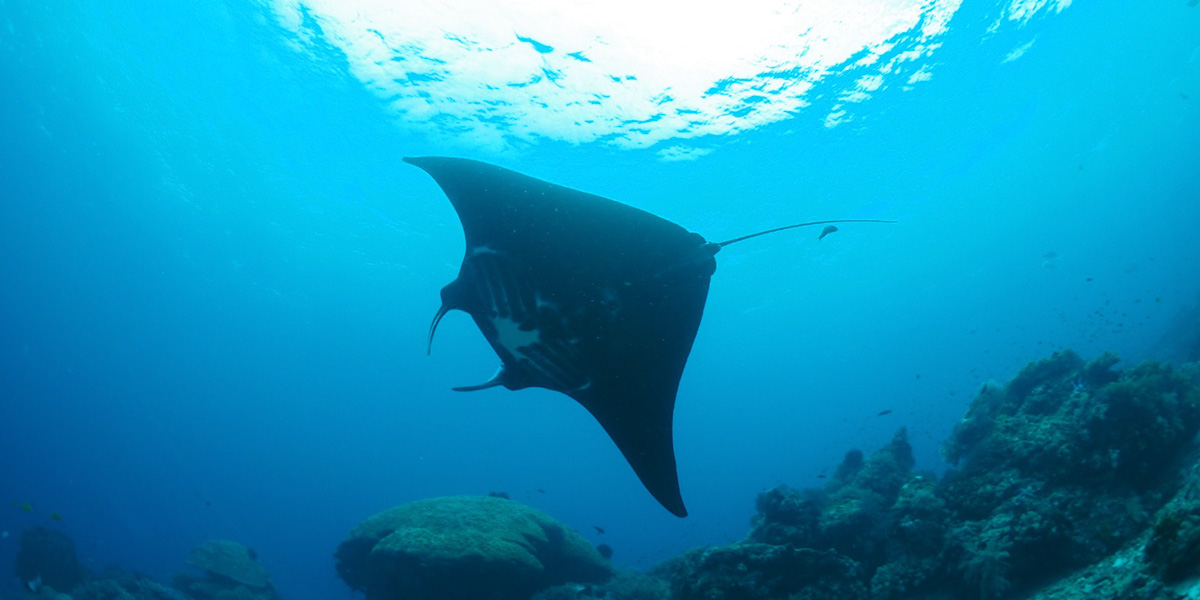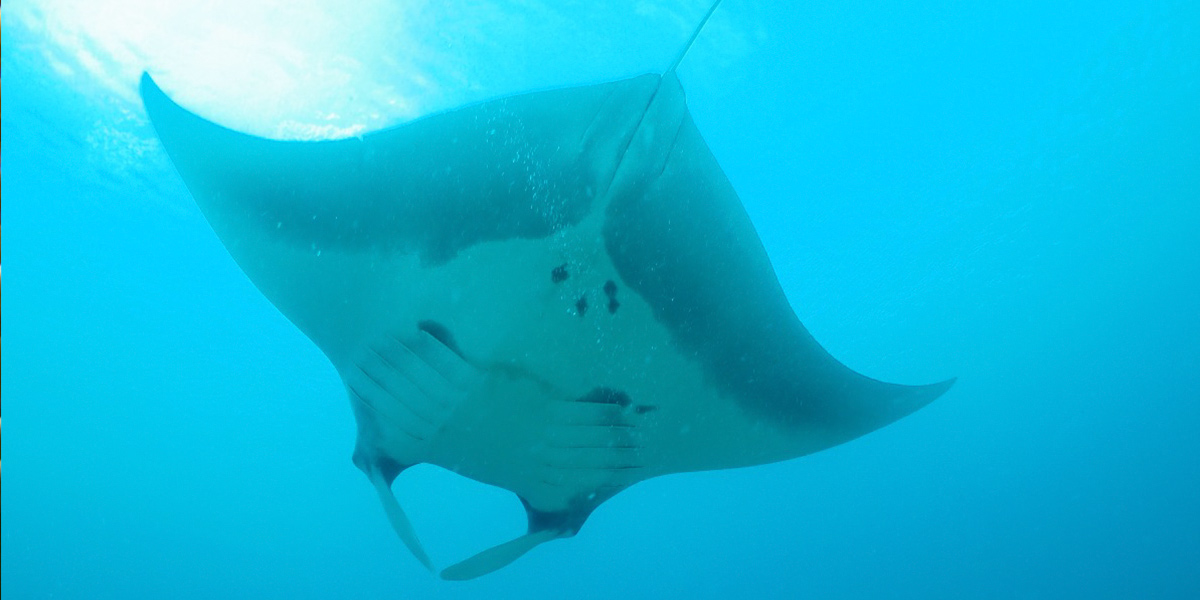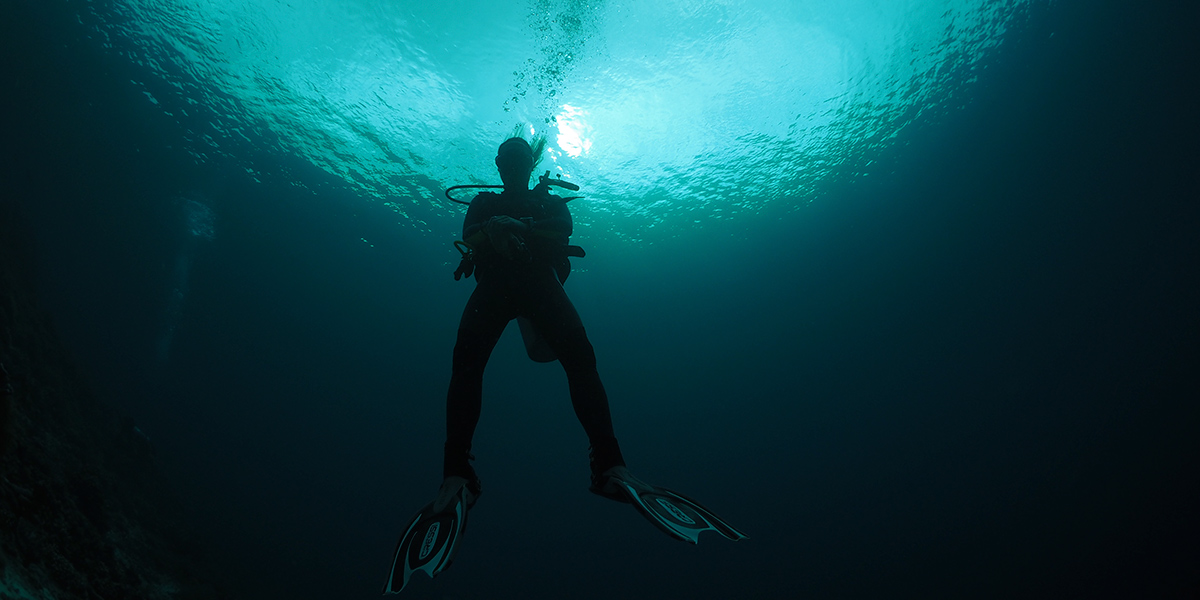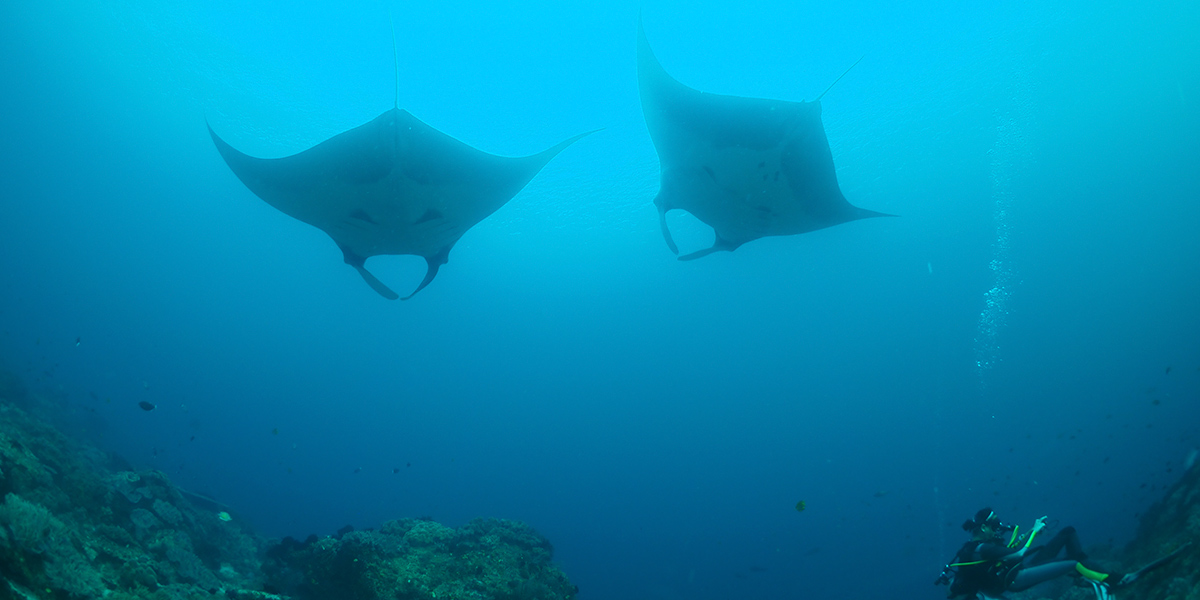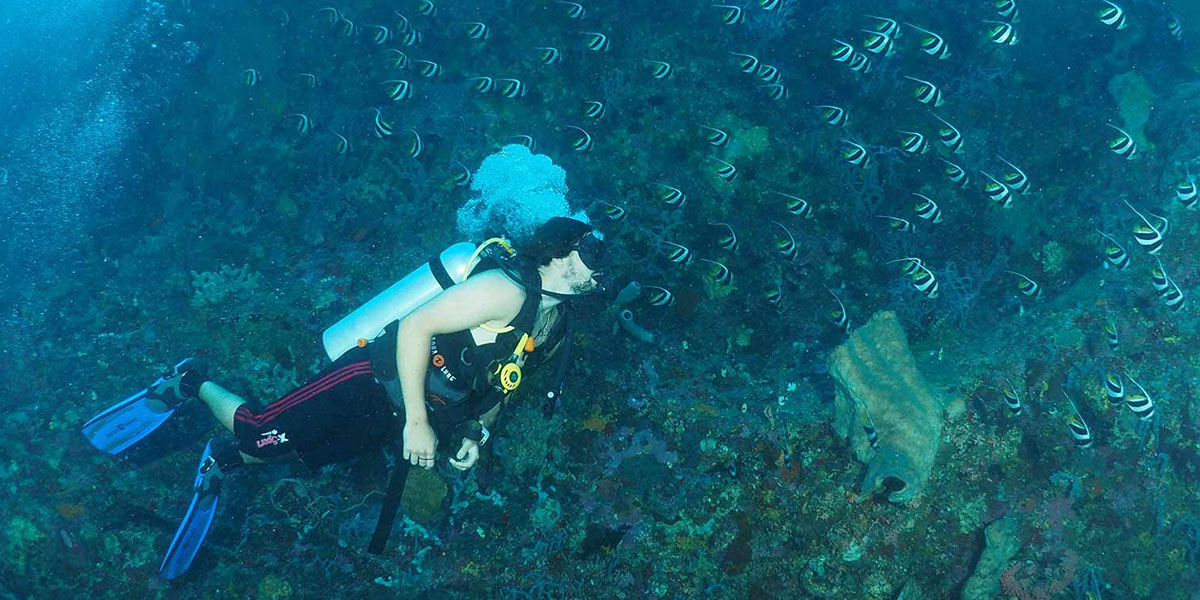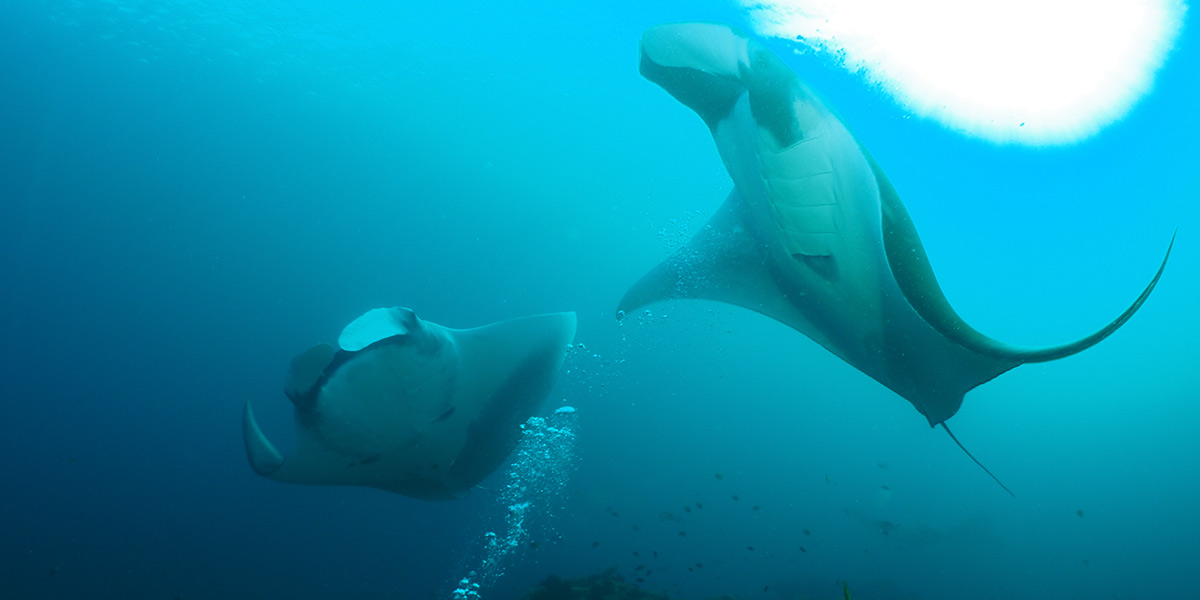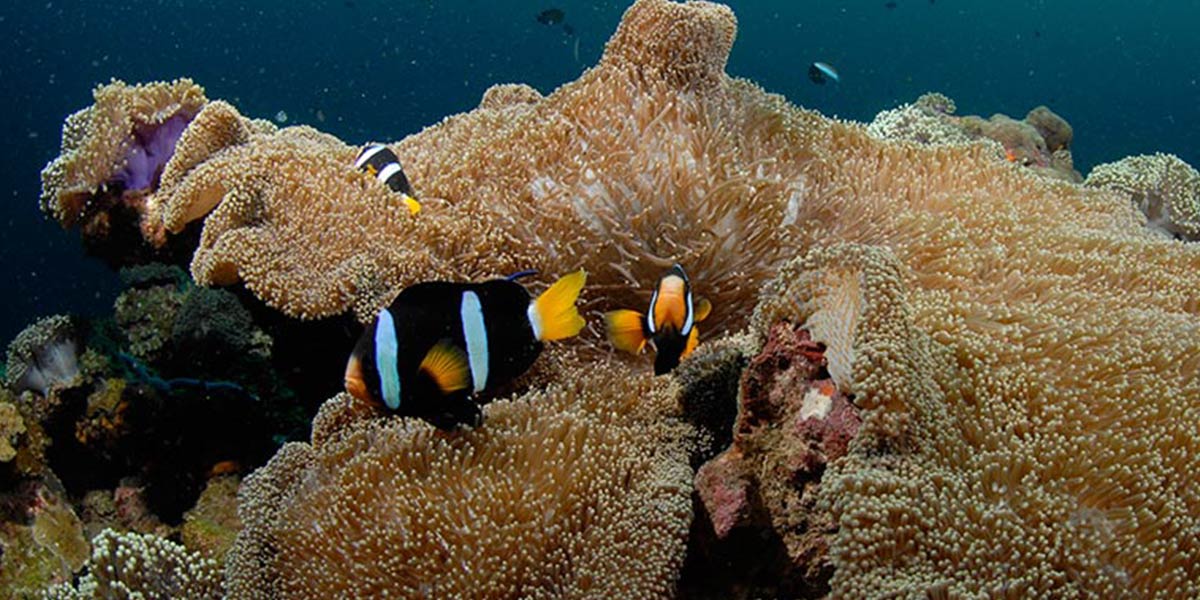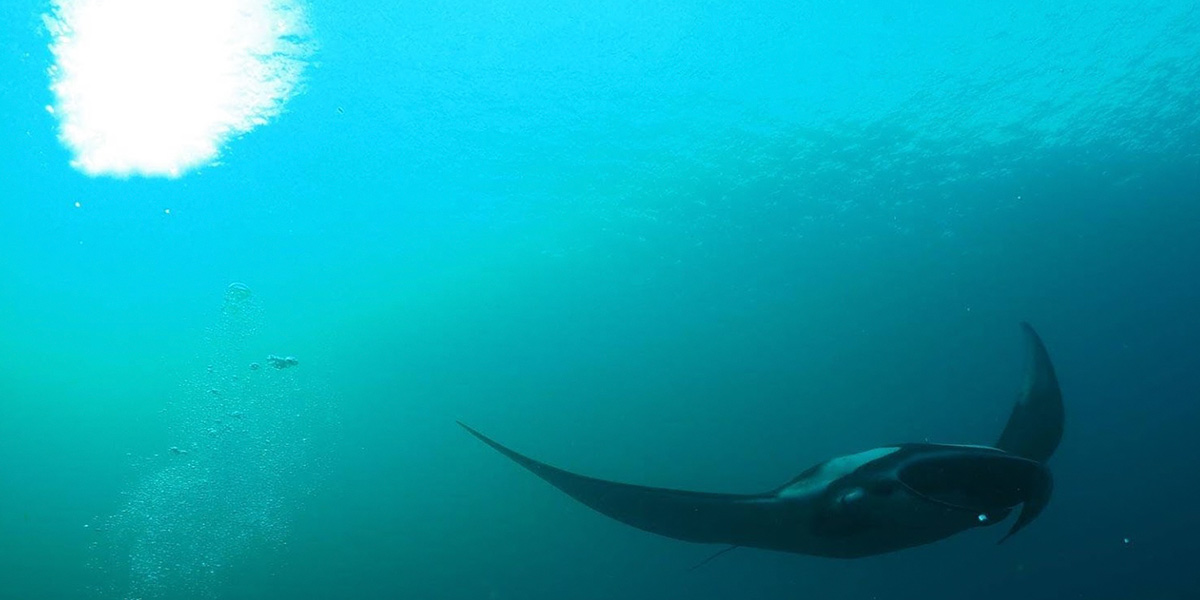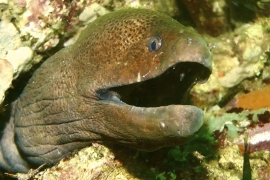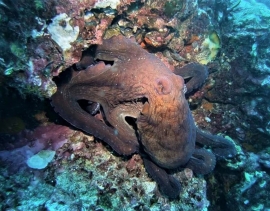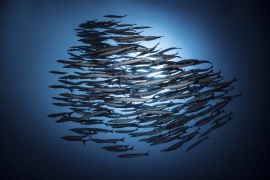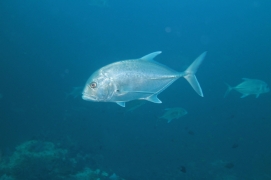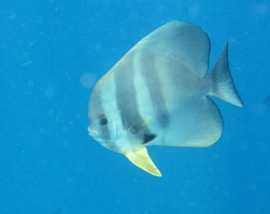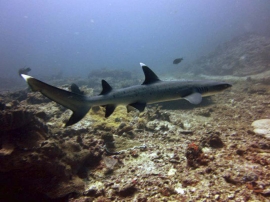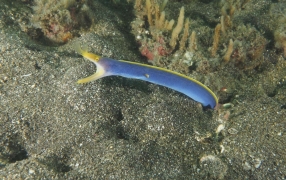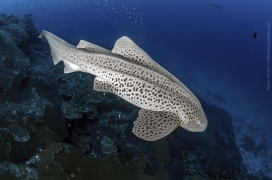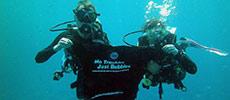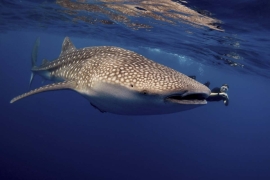
Maldives Liveaboard Diving
The Maldives is a small archipelago nation just south of India, and one of the best places in the world for scuba diving. The crystal-clear turquoise seas are home to thousands of species of fish, reptiles & invertebrates and visited by pelagic & migratory large fish, sharks, rays, whales & dolphins. Diving at The Maldives should be on every serious diver’s ‘to-do list.’ The country is made up of hundreds of tropical islands, most of which are uninhabited, and is separated into 26 atolls. The best Maldives diving experiences are week-long liveaboard cruises, often referred to as Maldives diving safaris, although there is also the option of staying in a resort and diving local reefs.
Opposing ocean currents from deep water bring in an abundance of food for the millions of marine inhabitants, and in turn, the larger species visit to feed or be cleaned. The quantity & quality of marine life makes The Maldives one of the best diving destinations in the world. Its geographical location not only helps the marine ecosystem flourish, but the country isn’t destroyed by overdevelopment or tourism. Maldives scuba diving cruises can be enjoyed on a variety of boats, ranging from affordable comfort to 5-star luxury.
Dive Sites in Maldives
Male Atoll is the main and most populated atoll in The Maldives. It's home to the country's capital city (Male) and main international airport. It's also known locally as Kaafu Atoll. Actually it's four atolls, which are North Male, South Male, Gaafaru, and Kaashidhoo. They are all located in the centre of The Maldives archipelago, on the eastern side. Many of the atolls' islands are uninhabited or resorts and most are on the eastern side, where the sea and weather conditions are better during high season. There's a wide range of different dive sites around Male Atoll, with something for every type of scuba diver.
Possibly the best place to dive in The Maldives is Ari Atoll. It's split up into two areas, which are North Ari & South Ari Atolls. This area is near to the centre of The Maldives, but on its western side, and due to the makeup of the atoll, it gets plenty of large species. Most of Ari's islands are on the eastern side, and there are large sandbars on the western side, created by winds and currents over thousands of years. Inside are dozens of thilas (undersea pinnacles) separated by channels (kandus) where nutrient-rich water flows through all year and attracts marine life of all shapes and sizes. The healthy reef life is in turn an attraction for large filter feeders and predatory sharks. Many locals and dive professionals consider Ari Atoll to be the best place for diving in The Maldives.
At the southern tip of The Maldives archipelago, Addu Atoll is the only part of the country that lies south of the equator. It is well known for year-round Whale Shark & Manta sightings, requiem sharks, and the largest shipwreck in the country. You can get there by landing at Addu City, but it's better to cruise on a Maldives diving liveaboard trip departing from Gan (Laamu) or Koodoo. February and March are the best months to dive at Addu Atoll (formerly known as Seenu Atoll).
Vaavu Atoll is the easternmost point of The Maldives, and just south of South Male. It is considered to be the least developed of all the Maldives atolls, and home to possibly one of the best diving reefs (Fotteyo Falhul) in the world. Add to this that there are almost no diving resorts there, and your liveaboard group will probably have each dive site to yourselves. Some stronger currents through the channels ensure for lots of action from large predatory sharks, plus Manta Rays and Whale Sharks are common visitors. Vaavu Atoll is excellent for scuba divers, especially those who are certified to 30 metres and have more than 50 dives' experience.
Meemu Atoll (known locally as Mulaku Atoll) is on the eastern side of the southern part of The Maldives. It's famous for its Manta Ray cleaning stations, in addition to being a great place to dive for all levels of certification and experience. The sheltered lagoons inside the atoll are home to lots of healthy marine life because the nutrient-rich water is pushed through the channels from the Indian Ocean. Lots of marine life but not many resorts or development make for a wonderful Maldives scuba diving location, particularly on a liveaboard diving safari.
Scuba diving at Rasdhoo Atoll is among the best in the Maldives. This doesn't just mean 'the most exciting,' and includes easier dive sites for new or novice scuba divers. There are almost twenty great dive sites within a small area, and the dive sites vary from wrecks to blue-water early-morning shark dives. The location is ideal for logistics & travel, while still giving the feeling that you're away from it all. There are only a few small islands at Rasdhoo, and the main island has several dive centres. But Rasdhoo Atoll is best to visit on a Maldives liveaboard diving safari.
Thaa Atoll is near the southern end of The Maldives and has very little development, one resort and a few guesthouses. It's quite a large atoll and not many liveaboard diving itineraries include it. Therefore it is a very quiet place to visit. And with approximately 30 dive sites, it's never crowded and most boats will have a dive site all to themselves. Marine life is varied and can sometimes include large sharks & rays. Liveaboard cruises which include Thaa Atoll may begin at Male and end in Laamu, or vice versa.
Lhaviyani Atoll is in the central-north area of The Maldives and visited by liveaboards during the high season. There are 50 or more dive sites to explore, including reefs, wrecks and drift dives. The atoll is quite large, and most of its channels and dive sites are in the northern corner. There are more than 50 islands, but nearly all are uninhabited. A few resorts are there, but the best way to visit is on a Maldives liveaboard diving safari, departing from & returning to Male.
Baa Atoll is best known for its huge congregations of Manta Rays in Hanifaru Bay. However, you can only snorkel in this bay (no diving) and the best months for Manta Rays are during the low season, when the weather's not so good. It's a popular destination for Maldives diving liveaboard safaris which visit the north or north-central atolls. There are more than sixty dive sites to visit, and there's something for everyone, regarding certification level, experience and marine life, large & small.
Noonu is the southern part of The Maldives' largest natural atoll, which is located in the north of the country, on the eastern side. Islands here tend to be more spread out than at other Maldives atolls, but there are still plenty of excellent dive sites. Maldives diving liveaboards do not visit Noonu as much as the central and southern atolls, meaning that if you come here you are almost guaranteed to be on the only liveaboard at each dive site.
Raa Atoll is quite large & in the northwest of The Maldives. It's a popular area for diving, due to there being so many islands, thilas, giris & farus. Maldives liveaboard diving boats visit Raa Atoll as part of their Northern & North Central trips. Being exposed to the open ocean on its western side, plenty of healthy marine life lives & visits here. Most of the dive sites are in the middle & southern parts of the inside of the lagoon, and there are plenty of kandus that offer strong currents & the life that they feed.
Conditions at Maldives
When to dive at Maldives
It's possible to dive all year round at The Maldives, but December to April are the months with the best sea & weather conditions. May to July is the 'rainy season' but diving is still possible and the weather is hot and sunny in between storms.
The country is affected by two monsoon seasons. The northeast monsoon is from December to May, which results in gentle winds from the northeast. This causes the eastern side of The Maldives to have the best underwater visibility, but the western side still has more than 15 metres visibility most of the time, and Manta Rays tend to congregate on the western side during this period. Currents are stronger during this time, most often flowing east to west, through the atolls.
From July to November things change to the opposite for winds, currents & visibility. The surface of the sea is rougher during this period, and there's more rain and less sunshine. From July to October is considered the best time for sightings of the gentle giants (Manta Rays & Whale Sharks), particularly at Hanifaru Bay. But these fish can be seen all year round and at all the atolls. It's more a case of luck than anything else.
What type of dive site is Maldives
There are all kinds of dive sites around the Maldives, but most are sloping coral reefs, which surround the atolls. There are several wrecks to dive at The Maldives, plus some drop-offs.
Where is Maldives?
The Maldives are in the middle of The Indian Ocean, southwest from Sri Lanka, and 400 km. north of the equator.
How to get to Maldives
Getting to The Maldives can only be done by international flight, with many airlines coming from around the world. Once you're in The Maldives, getting to each dive site is best done by scuba diving liveaboard, where you cruise around for one week. However, if you're staying in a resort, you can get to local dive sites by using the resort's day trip diving boat.
Who can dive at Maldives
Anyone can scuba dive at The Maldives, but this is dependant on each dive site. Absolute beginners can try scuba diving or learn to dive there, but only at selected reefs. Most of our Maldives liveaboard cruises are suitable for Open Water Divers and above, but the majority of our guests are experienced Advanced Open Water Divers or higher. Diving professionals & technical divers can join trips that offer deep and drift diving.
What marine life can you see at Maldives?
The Maldives is known for its fantastic scuba diving mainly due to the diverse marine life that is abundant at every reef or atoll. Thousands of species from the smallest to the largest can be seen here. These include reef fish, large pelagics, invertebrates and more. Some divers prefer to look out for large species in the blue water, while others like to scour the reef looking for small or hard-to-spot resident species.
Summary of Maldives
The Maldives is among the best places in the world for scuba diving. Divers of all levels can enjoy safe and exciting dives here, with a huge variety of dive sites and conditions. It's possible to dive all year at The Maldives, with the months from December to April or May having the best conditions. June & July are wettest, but from July to October there are more chances of seeing big filter feeders, such as Whale Sharks and Manta Rays. Saying that the visibility is reduced during this time. Without doubt, the best way to enjoy Maldives scuba diving is on a week-long scuba diving liveaboard cruise, also known as a diving safari.
